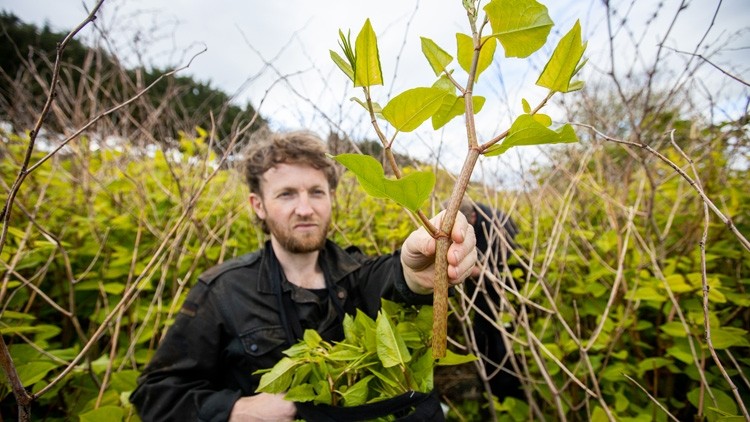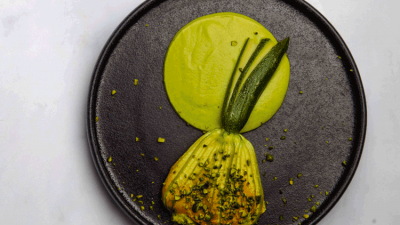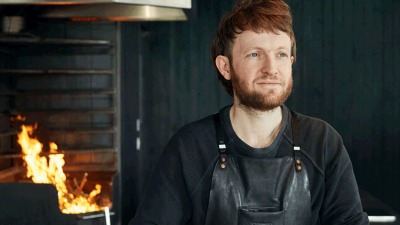To be or knot to be: Douglas McMaster on using invasive species in cooking

What made you to want to explore using invasive species in your cooking?
It started about 10 years ago in Australia. I was driving through the countryside and saw some kangaroos, and my companion was telling me about how invasive they were. They asked if I would cook them, and I responded saying I didn’t know, but maybe. That’s my first memory of contemplating using an invasive species on a menu. Anyone taking sustainability seriously can appreciate the validity and the strength of that idea. It’s a highly plausible option.
You launched your invasive species dinner series earlier this month with a meal focused on Japanese knotweed, what is it about that ingredient that caught your attention?
When we first launched Silo in Brighton in 2014, we immediately started putting Japanese knotweed on the menu. As a creative, I like to conceptualise different ideas for sustainability and nature, and the character of knotweed as an ingredient is really special. We did a Japanese knotweed salad with brassica flowers and a cured egg yolk; and a squirrel broth with pickled knotweed. The dinners are about pushing the conversation forward. And hopefully by popularising and bringing this into our conscious minds it really helps this movement progress and get some traction. The Japanese knotweed we used for the event comes from a forest that’s completely off grid, and it’s totally organic and wild.
What was the process behind deciding which invasive ingredients to use?
There’s no manual or guide on which ones are edible and not. I’ve spent so much time researching and communicating with environmentalists, who make up the bulk of the supply chain; people whose job is to push back the overwhelming population of these ingredients. And it’s highly plausible to do this by eating them as they’re delicious.
How did you go about sourcing the ingredients?
That was the biggest challenge. It’s the same as with zero waste in that the supply chains don’t exist yet. For the dinner, I was out in Suffolk with a hunter, shooting squirrels. The amount of time and logistics into creating that one meal was tough. It took more than 100 hours to source all ingredients, which is a highly inefficient way of doing an event, but someone’s got to do it.
Will you be looking to incorporate invasive species into Silo’s regular menu?
Our head chef Brenden created 10 new dishes for the inaugural dinner, and what was really brilliant was seeing the team embrace the brief. Hopefully now, after the first dinner, it’s under their skin and they really get it. Within my team a lightbulb has gone off; they see the value of the ingredients and can do something special with. So it becomes part of their consciousness and they start thinking ‘let’s put that on the menu when it’s in season’, and so naturally that feeds into the menu. It feels like that fire has been lit and will go on.
Do you expect to see other restaurants also explore them?
Absolutely. This isn’t the first time we’ve been shouting about these ingredients and we’ve already seen a couple of restaurants putting them on their menus. Brad Carter of Carter’s at Moseley in Birmingham says he loves using the American signal crayfish in his cooking. And it really does create that awareness. I’m quietly confident that that will continue to hit other significant menus. And it’s like with everything at Silo, the more we prove that it can be nice and delicious, as we did with zero waste – showing it can be bougie and glamorous – and that you don’t have to compromise on quality and still follow these mantras, the more people will embrace it. Hopefully we’re proving that sustainability can be sexy, and that includes invasive species.
To find out about future dinners in Silo's invasive species series, click here.




















